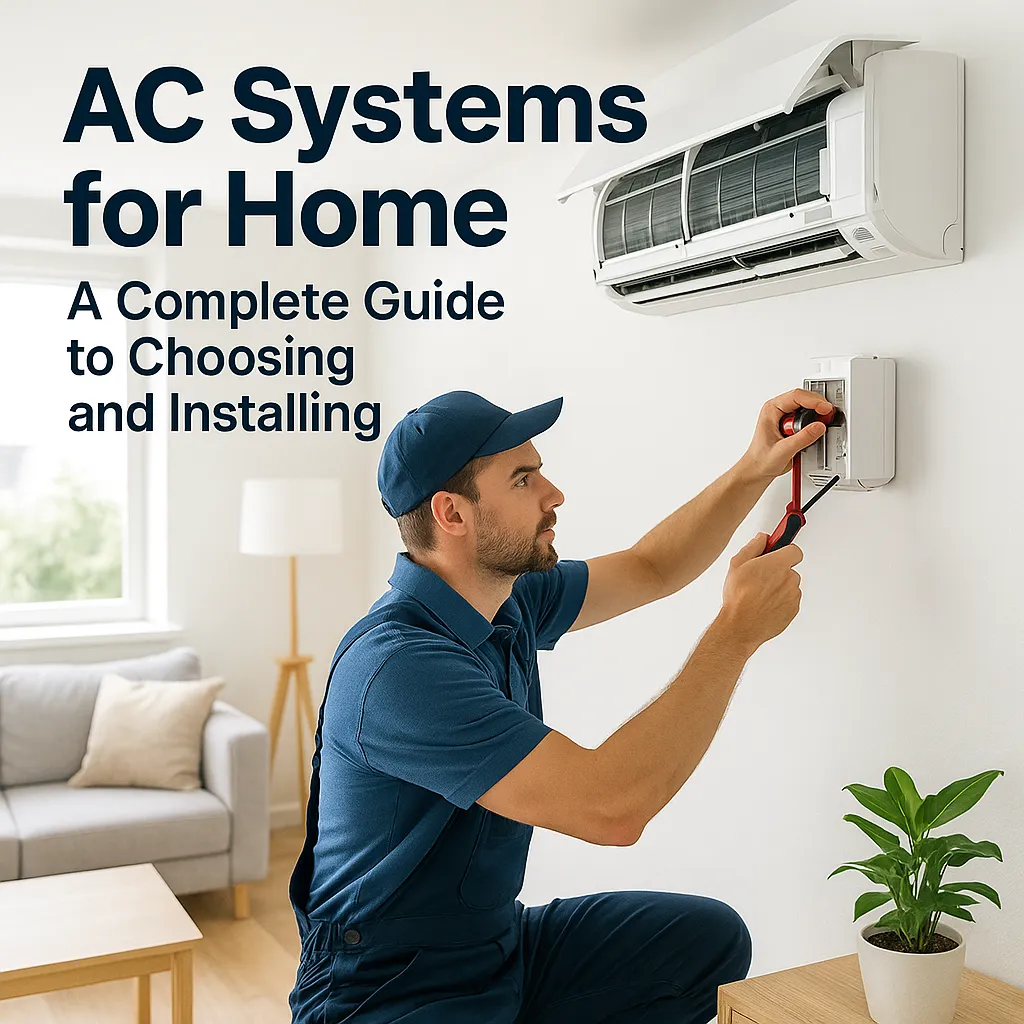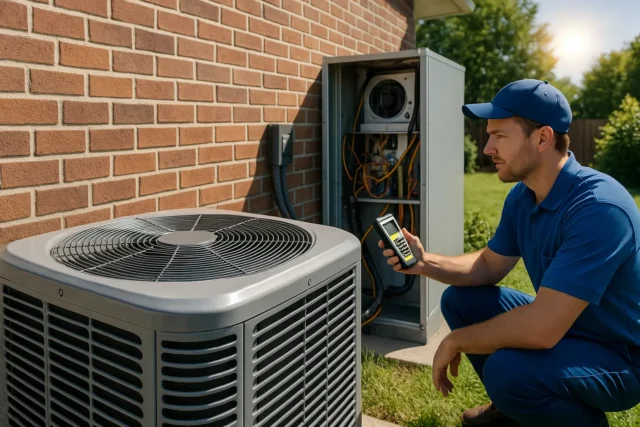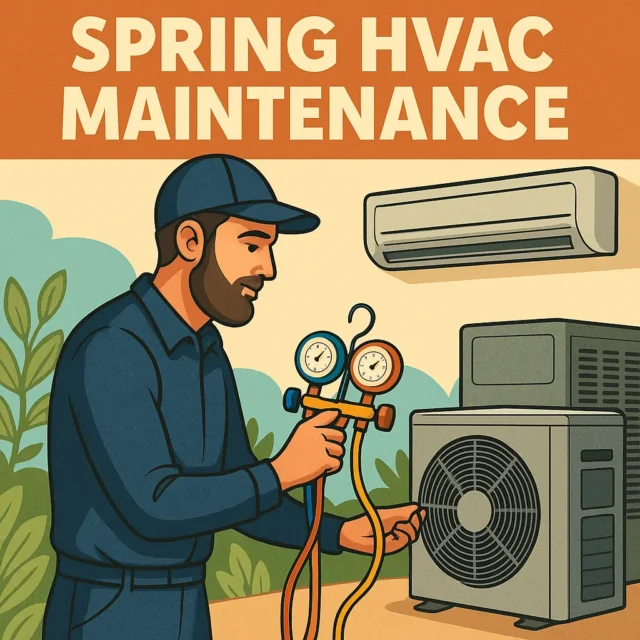AC Systems for Home: A Complete Guide to Choosing and Installing

When it comes to creating a comfortable living space, few things matter as much as having the right air conditioning system. Summers are getting hotter, energy bills are climbing, and families want reliable solutions that balance comfort with cost. Choosing the right ac systems for home is not just about cooling your rooms—it’s about energy efficiency, long-term savings, and ensuring your family feels comfortable all year long.
This guide provides a clear overview of the different types of AC systems, how to choose the best one for your home, the installation process, and what kind of care they need after setup. Whether you are replacing an outdated unit or installing air conditioning for the first time, the right choice can make a huge difference in both comfort and household expenses.
Why AC Systems for Home Are Essential Today
Air conditioning has shifted from being a luxury to being a necessity for many households. Extreme weather patterns have increased the demand for efficient cooling, while modern homes often require systems that can manage indoor air quality as well as temperature.
Here are a few reasons why AC systems play a crucial role today:
Health benefits: AC helps reduce humidity and prevents mold growth, which protects both your home’s structure and your family’s health.
Improved air quality: Many systems filter dust, allergens, and even bacteria, making indoor spaces safer.
Comfort: Consistent cooling helps you sleep better, focus on work, and enjoy your free time at home.
Energy savings: Modern AC systems are far more efficient than older models, meaning lower electricity bills when properly maintained.
With these factors in mind, it’s clear why investing in AC is no longer optional for most households—it’s essential.
Main Types of AC Systems for Home Explained
When deciding which AC to buy, it’s important to understand the different types available. Each comes with its own benefits, drawbacks, and ideal use cases.
Central Air Conditioning
Central AC is one of the most common choices in larger homes. It uses ducts to distribute cooled air across every room, ensuring consistent temperatures throughout the house. While installation costs are higher, central AC offers excellent long-term comfort and can increase property value.
Pros:
Cools the entire home evenly.
Quiet operation.
Adds value to the property.
Cons:
Higher installation costs.
Requires ductwork, which may not be available in older homes.
Ductless Mini-Split Systems
These systems are perfect for homes without ductwork. They allow you to cool specific rooms individually and are highly energy efficient. Each indoor unit connects to an outdoor compressor, making them flexible and customizable.
Pros:
No ductwork required.
Zone cooling saves energy.
Easy to install compared to central AC.
Cons:
Higher upfront cost per unit.
Indoor units are visible on walls.
Window Units
A window AC unit is an affordable option for small rooms or apartments. They are compact, easy to install, and require minimal maintenance.
Pros:
Low cost.
Simple installation.
Great for small spaces.
Cons:
Noisy compared to other systems.
Limited cooling capacity.
Portable AC Units
Portable systems are similar to window units but can be moved from room to room. They are convenient for renters or people who don’t want to make permanent modifications.
Pros:
Flexible and movable.
No permanent installation required.
Cons:
Less efficient.
Often take up floor space.
Cost, Efficiency, and Long-Term Savings
The cost of AC depends on the type of system, size of your home, and installation requirements. Here’s a breakdown of what you can expect:
Central AC: $3,000–$7,500 installed.
Ductless mini-split: $1,500–$5,000 depending on number of zones.
Window unit: $150–$500.
Portable AC: $200–$700.
Beyond initial costs, energy efficiency is the biggest factor in long-term savings. Modern systems with high SEER (Seasonal Energy Efficiency Ratio) ratings can cut electricity bills significantly. For example, upgrading from a 10 SEER unit to a 16 SEER unit can reduce energy costs by 30–40%.
Over the lifespan of an AC system (10–15 years), this difference can save homeowners thousands of dollars.
Professional Help vs. DIY Installation
Some homeowners wonder if installing an AC system themselves is a good idea. For small units like window or portable ACs, DIY installation is usually fine. However, central air and ductless mini-splits require professional expertise.
Improper installation can lead to:
Poor efficiency.
Higher energy bills.
Frequent breakdowns.
Reduced lifespan of the system.
For homeowners seeking reliability, our AC installation service ensures your unit is properly sized, professionally installed, and optimized for performance. This guarantees not only comfort but also long-term savings on energy costs.
Tips for Maintaining AC Systems for Home After Installation
Installing the system is only the first step. To get the most out of your AC, regular maintenance is essential. Here are the most effective tips:
Change filters regularly: Dirty filters force the system to work harder, wasting energy.
Inspect for leaks: Small refrigerant leaks can cause major efficiency problems.
Clean the outdoor unit: Keep the condenser free of leaves, dirt, and debris.
Check insulation: Proper insulation reduces strain on your AC.
Schedule annual maintenance: Professional check-ups ensure all components are running smoothly.
Following these steps can extend the life of your system and prevent costly repairs.
Energy Efficiency and Comfort: Finding the Balance
The best AC system is not always the most expensive one. Instead, it’s the system that matches your home’s size, local climate, and lifestyle needs. Choosing a system that is too powerful wastes electricity, while choosing one too weak leaves your home uncomfortable.
Professional installers use detailed calculations (called load calculations) to find the perfect match for your home. This ensures your AC runs efficiently without straining or overcooling.
Conclusion
Selecting the right ac systems for home is one of the most important investments you can make for comfort, efficiency, and long-term savings. With the right choice, proper installation, and consistent maintenance, your AC system will not only keep you cool but also protect your budget and improve indoor air quality.
If you are planning to upgrade or install a new system, take the time to compare your options and consider professional installation. The right AC setup pays for itself over time by keeping energy bills low, extending the life of your unit, and ensuring a comfortable home environment year-round.


